The Hebrew term deror likely refers to a bird from the swift family (Apodidae). In Israel, the Common Swift (Apus apus) and Little Swift (Apus affinis) are breeding birds, while the Pallid Swift (Apus pallidus) and Alpine Swift (Tachymarptis melba) are present as passage migrants, winter, and summer visitors. These four species share most characteristics and behaviors. The following description focuses specifically on the Common Swift, which has been the most extensively studied to date.
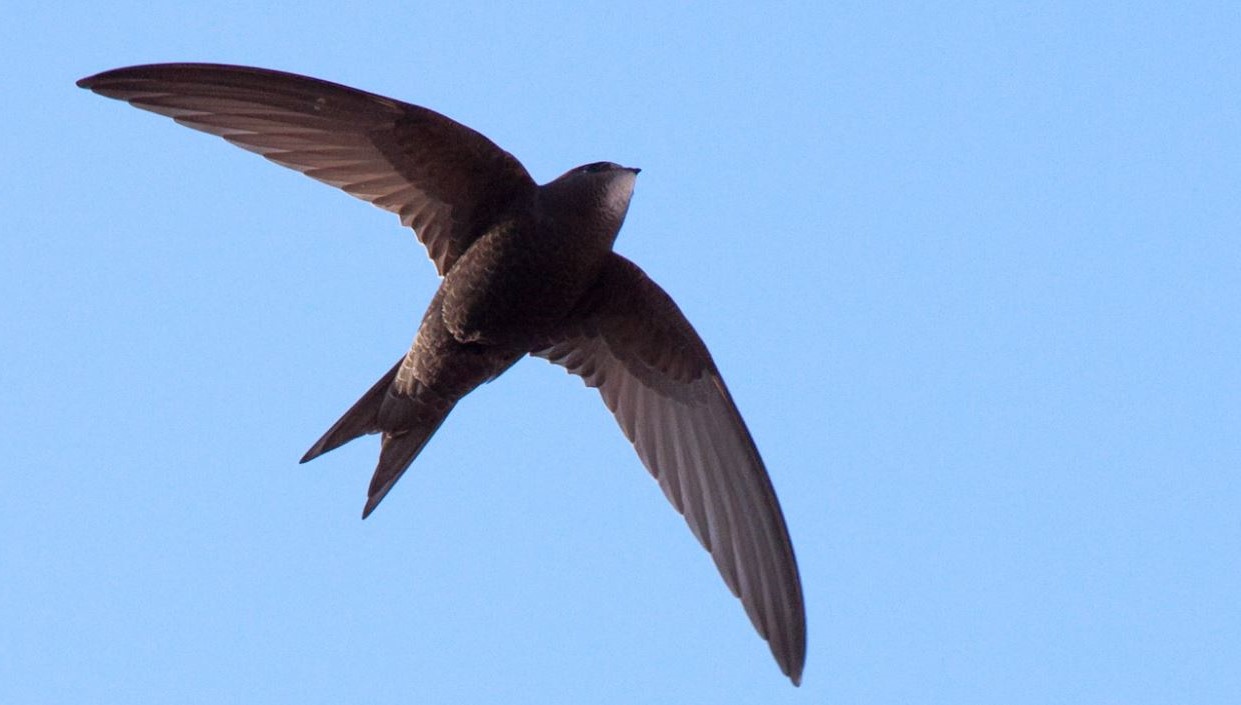
If there were flight-ready clutches, the Common Swift would be the first to take advantage. However, it must carry out the breeding process in a grounded manner, like any other bird. This aligns with the creation ideal: “Let birds fly above the earth across the vault of the sky […] and let the birds multiply on the earth” (Gen 1:20.22). Nevertheless, it keeps this phase of earthbound life as brief as possible, due to the risk of infection by parasites such as the swift louse fly (Crataerina pallida). The pair takes about five days to prepare a nest and lay two to three eggs. Incubation lasts approximately twenty days, followed by an intense feeding period. On a single day with good weather, the parents can collect about fifty grams of food, consisting of over 20,000 small insects and spiders! The prey is gathered in the throat pouch, partially still alive, formed into hazelnut-sized balls, and fed to the insatiable chicks. In return, the parents swallow the chicks’ fresh excrement and dispose of it properly outside the nest.
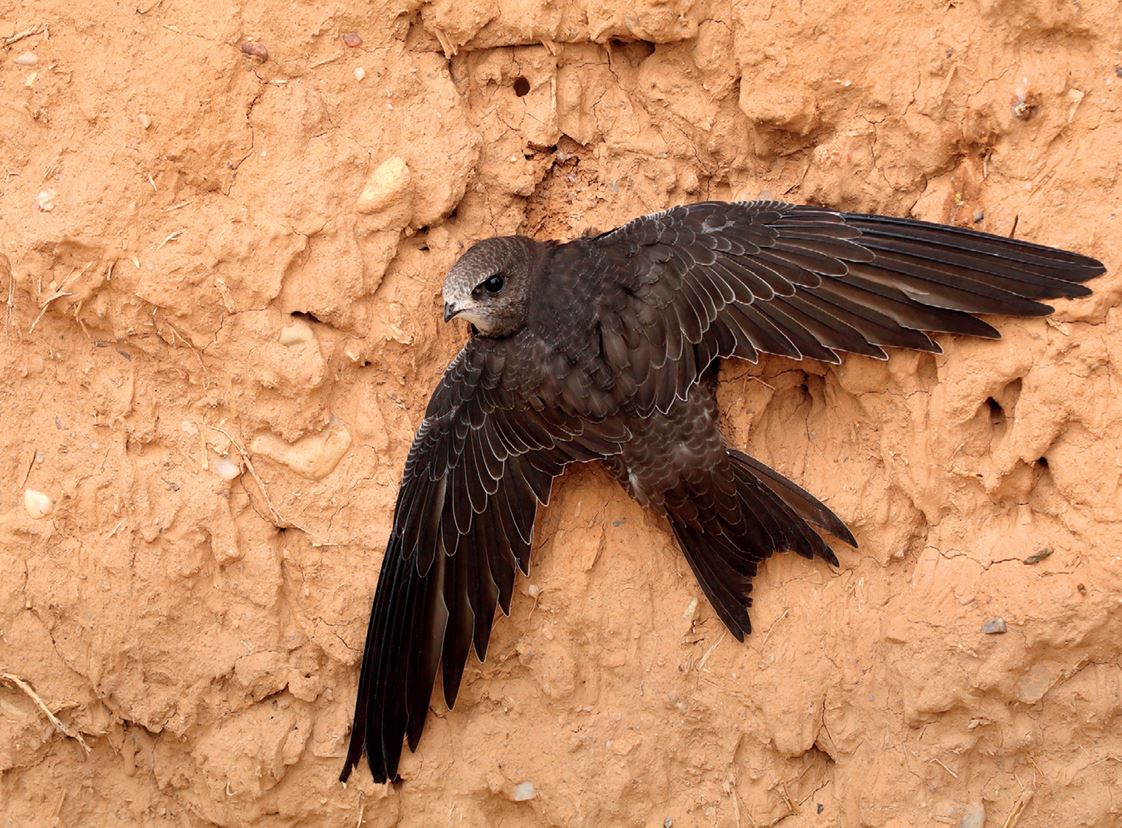
With such energy-rich nutrition, the chicks grow rapidly and reach their peak weight of sixty grams after just three weeks, making them one and a half times heavier than their parents. They need this reserve for their strenuous fitness program. Every day, they perform countless “wing push-ups,” lifting their bodies with outstretched wings and balancing for ten seconds above the nest floor. After successfully completing this “bodybuilding,” their flight muscles are strengthened, and the young athletes fast for a few days to burn off their fat reserves and slim down to their optimal takeoff weight.
Now alone in the nest, the exciting flight premiere doesn’t interest the parents. If it’s later in the year, they depart for their winter quarters just as the chicks stop begging. Throughout the day, the young sit at the nest entrance, looking out, preening their feathers, and doing final dry runs. By evening, the moment arrives: the first fledgling steps to the nest entrance, glances doubtfully downward, then decisively launches into the air – and flies! It flies as if it has never done anything else and immediately begins the long journey to southern Africa. No one has described the route to it; it simply knows where to go. Whether it reunites with its parents there is of no concern to any of them. They are no longer family, just competitors. While most migratory birds adhere to a strict schedule, swifts are weather experts, selecting the best wind patterns for their route with remarkable accuracy, saving up to twenty percent of energy.
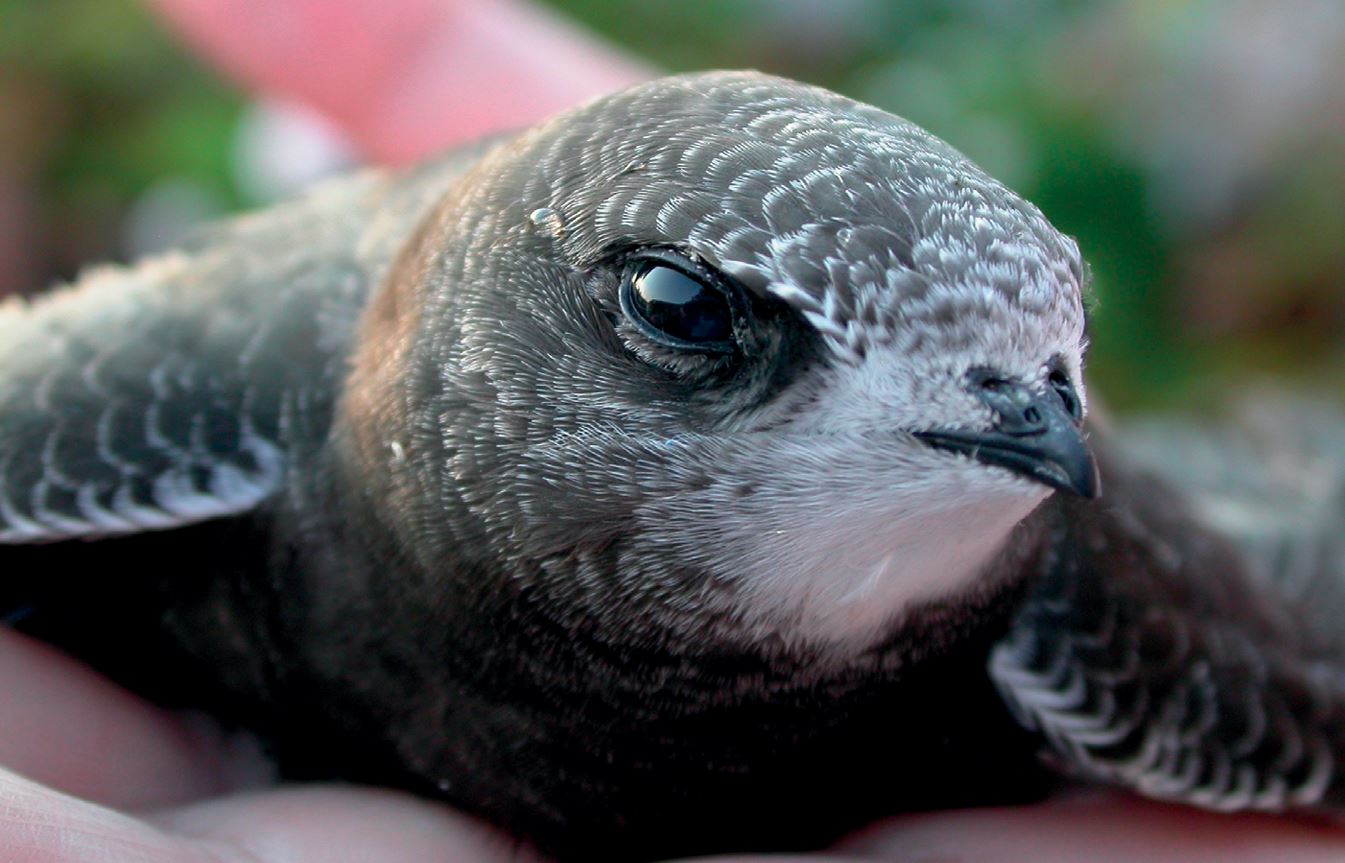
Some begin their flying careers with a three-year (!) continuous flight without any landings. Each year, they cover an average of 250,000 kilometers. Since they can live over twenty years, they are likely the creatures that travel the farthest in their lifetimes. Their Latin name Apus means “without feet.” They do have feet, though they appear quite atrophied, measuring 10-12 millimeters (including claws), the shortest in the bird world, unsuitable for walking or perching on branches. To sleep, these restless creatures ascend to altitudes up to 3,600 meters, flying there at an average of 23 kilometers per hour in energy-saving mode. During long migrations, they fly at about 32 kilometers per hour, optimizing the ratio between distance covered and “fuel consumption.” When hunting, they average 50 kilometers per hour, and when being chased or engaging in aerial courtship displays, they can reach speeds over 220 kilometers per hour. Alongside the peregrine falcon, they hold the speed record among all animals on Earth! When a male and female realize they are “flying together,” mating occurs, often executed mid-air in a highly risky maneuver, where the “coupled” partners sometimes lose altitude so rapidly that accidents occur.
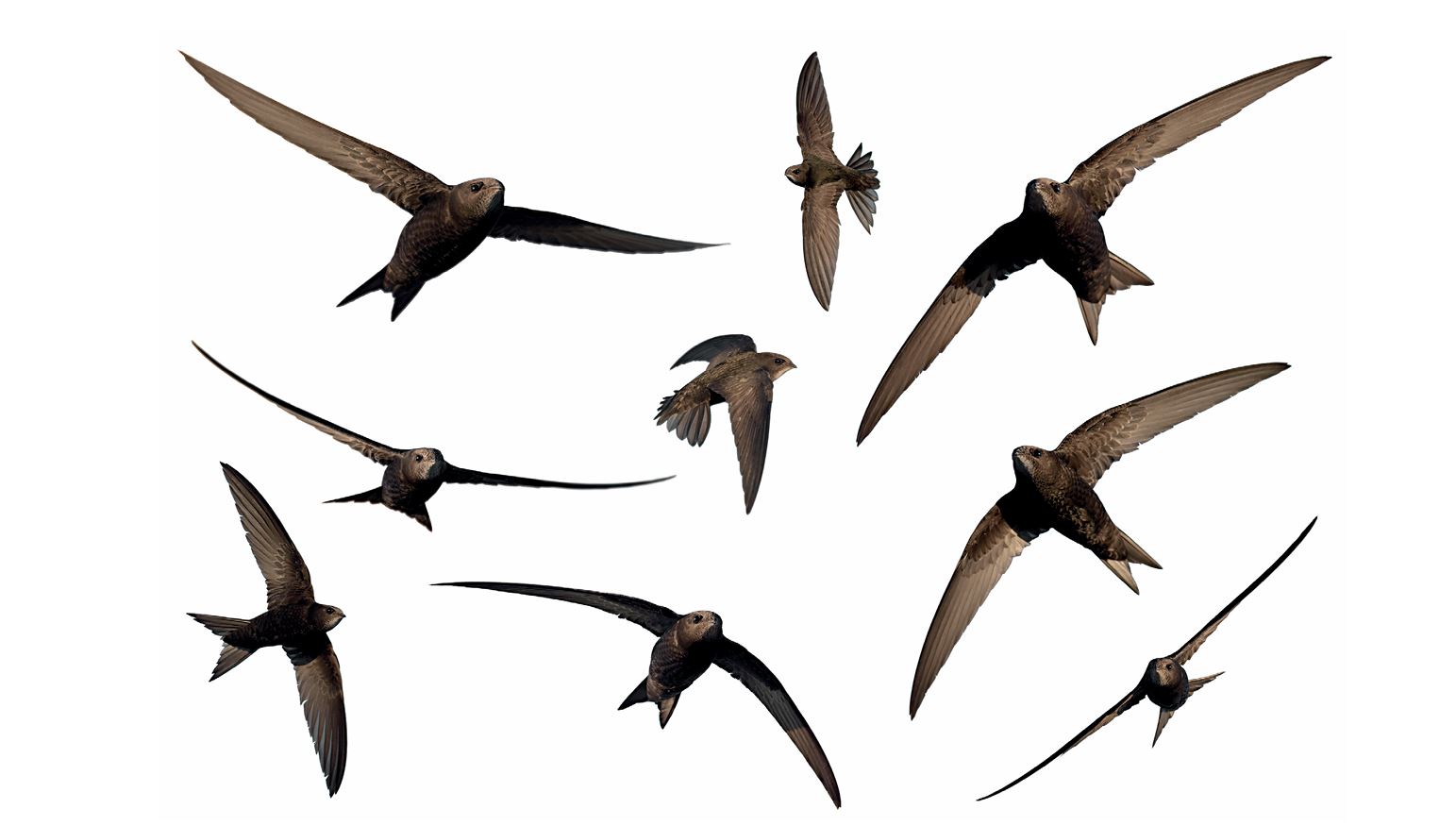
If there is one “heavenly citizen” on Earth who is not at all “earthly-minded,” it’s the Common Swift. Except for a few exceptions, it spends its entire life in the air. Traveling, eating, drinking, and sleeping: everything happens exclusively in flight. This reminds us that Christians also have their life goals and calling in heaven: “But our citizenship is in heaven, and we eagerly await a Savior from there, the Lord Jesus Christ” (Phil 3:20).

The Common Swift also appears in this remarkable proverb: “Like a fluttering sparrow or a darting swallow [= swift], an undeserved curse does not come to rest” (Prov 26:2). The two mentioned birds complement each other. While shy songbirds take flight at the slightest disturbance, the swift is the fastest creature of all, moving away so rapidly that the eye can hardly follow. Thus, an undeserved curse is fleeting, unstable, and quickly forgotten. Perhaps this translation captures it even better: “… so is an undeserved curse: It does not come to rest on anyone” (Prov 26:2b) – for if there’s one thing the swift avoids, it’s settling down anywhere; and most songbirds keep the greatest possible distance from humans.
To better understand the meaning of the proverb, it’s interesting to consider the opposite case. A deserved curse has consequences: “Do not slander a servant to their master, or they will curse you, and you will pay for it” (Prov 30:10). God listens to the voices of the oppressed and those who suffer unjustly and grants them justice. Eleven psalms have the call for vengeance and retribution as a central theme. This may initially be unsettling, but it’s better to entrust one’s desire for retribution to God than to take revenge oneself (Rom 12:19). King David, who prayed many prayers for retribution, was consistent in this regard. He had two opportunities to take revenge himself (1Sam 24:5; 26:9) and did not. Following the example of the Lord Jesus, who prayed for his enemies even on the cross (Lk 23:34), and empowered by the Holy Spirit, a believer today can go even further: “Bless those who persecute you; bless and do not curse” (Rom 12:14).
Hardly any other animal is so unattached to a specific place. The Common Swift simply follows good weather and insect swarms. This nomadic lifestyle is sometimes even pursued during the breeding season. If its pronounced sensitivity to weather forecasts indicates that its breeding area – such as the Oberberg region – is about to be hit by several days of continuous rain, it spontaneously and necessarily decides on a trip to Italy. Since it can only hunt flying insects, there’s nothing to catch during rainy weather. The abandoned chicks dramatically slow their heartbeat, breathing, and body temperature, entering a state of torpor with minimal energy consumption.
Once their fat reserves are depleted, they begin to burn their muscles, and then their liver. When the liver is also depleted, they die – but that usually takes more than two weeks, depending on the outside temperature, and the parents rarely stay away that long. Eventually, the sun also returns to the Oberberg region. In Israel, the climate is milder. It’s actually strange that the swifts, who have the whole world at their disposal, choose to stay here. Studies have shown that the theoretical advantage of longer summer days in northern countries is negated by periods of bad weather during which the birds are unable to hunt. Why they still keep returning to their traditional breeding sites remains a mystery.
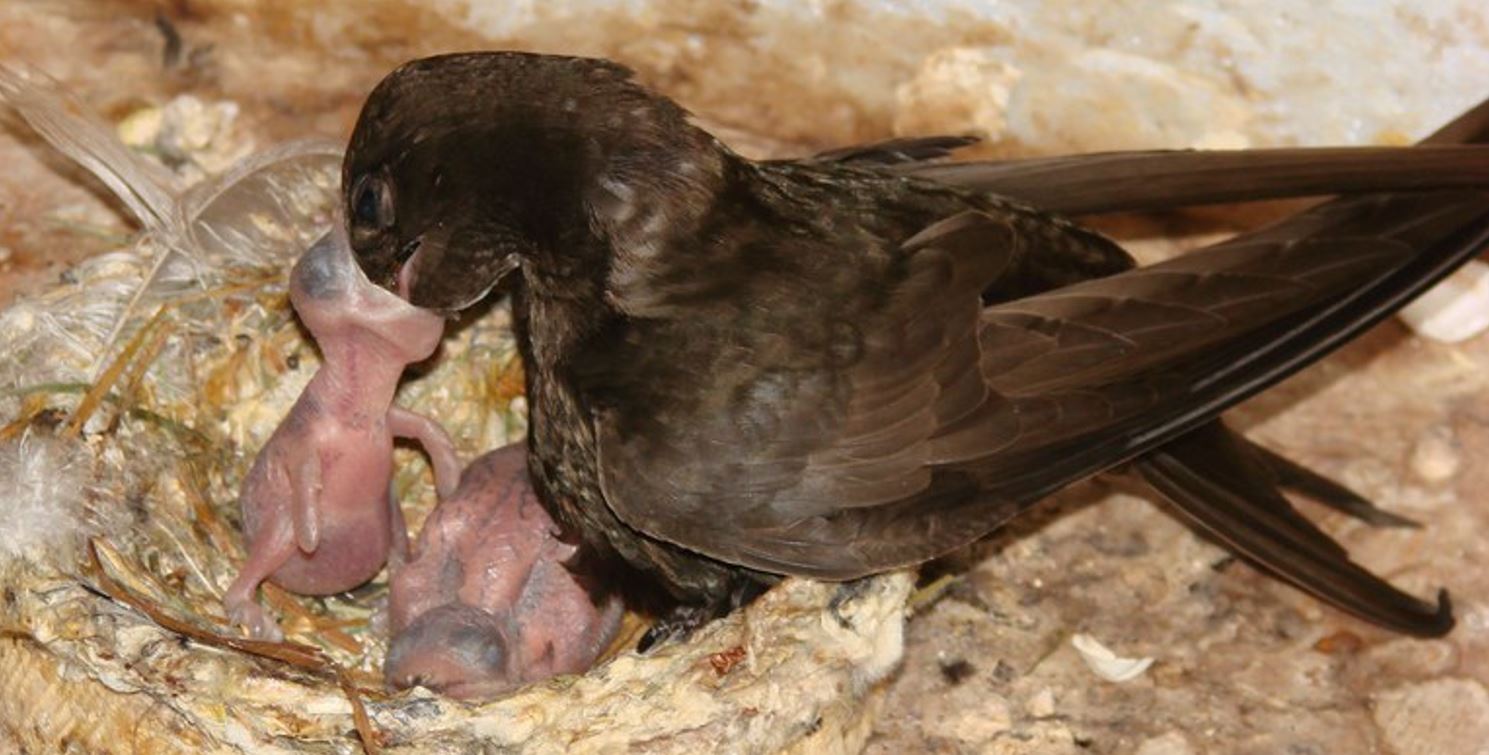
Of the deror it is said: “Even the sparrow has found a home, and the [swift] a nest for herself, where she may have her young – a place near your altar, Lord Almighty, my King and my God” (Ps 84:3). The translation has been slightly adjusted here, as the word is usually rendered “swallow” in most versions, probably for poetic reasons. The sparrow – a common, widespread bird and symbol of what is often overlooked – is placed alongside the restless swift. Even the least and most driven can find rest and safety with God.
Only one person ever found no rest, day or night (Ps 22:2). “Foxes have dens and birds of the air have nests, but the Son of Man has no place to lay his head” (Mt 8:20). He died standing upright – for us. That was necessary before He could enter into rest. On the cross at Golgotha He said, “It is finished.” And then, “He bowed his head [Greek: klino] and gave up His spirit” (Joh 19:30).
Sources:
Åkesson, S; Klaassen, R; Holmgren, J: Migration Routes and Strategies in a Highly Aerial Migrant, the Common Swift Apus apus, Revealed by Light-Level Geolocators. PLoS One 2012; e41195. doi: 10.1371/journal.pone.0041195
Åkesson, S; Bianco, G: Wind-assisted sprint migration in northern swifts. iScience 2021; doi: 10.1016/j.isci.2021.102474
Hedenström, A; Alerstam, T: Optimum Fuel Loads in Migratory Birds: Distinguishing Between Time and Energy Minimization. Journal of Theoretical Biology 1997; 189:227-234
Henningsson, P; Johansson, LC; Hedenström, A: How swift are swifts Apus apus? Journal of Avian Biology 2010; 41:94-98; doi: 10.1111/j.1600-048X.2009.04850.x
Henningsson, P; Hedenström, A: Aerodynamics of gliding flight in common swifts. Journal of Experimental Biology 2011; 214:38-293; doi: 10.1242/jeb.050609
Kaiser, E: Gedanken zur Luftübernachtung des Mauerseglers Apus apus. Ornithologische Jahresberichte des Museum Heineanum 2001; 19:131-135
Lockley, RM: Non-Stop Flight and Migration in the Common Swift Apus apus. Ostrich – Journal of African Ornithology 1969; 40:265-269
Martins, TLM: Fledging in the common swift, Apus apus: weight-watching with a difference. Animal Behaviour 1997; 54: 99-108; doi: 10.1006/anbe.1996.0429
Mauersegler-Website. http://www.commonswift.org/mauersegler.html
Meinertzhagen, R: The Speed and Altitude of Bird Flight. IBIS International Journal of Avian Science 1955; 97:81-117; doi: 10.1111/j.1474-919X.1955.tb03020.x
Walker, MD; Rotherham, ID: Characteristics of Crataerina pallida populations; a nest ectoparasite of the common swift, Apus apus. Experimental Parasitology 2010; 126:451-455; doi: 10.1016/j.exppara.2010.05.019
Image Credits:
Wikipedia: resting Common Swift / Klaus Roggel // single flying Common Swift / pau.artigas
other licenses: swift portrait / shutterstock_44656858.jpg / Marek Velechovsky // swift at clay wall / shutterstock_1568294260.jpg / Miroslav Hlavko // swift flight postures / shutterstock_426164464.jpg / Gallinago_media // swift drinking in flight / shutterstock_1200960928.jpg / Bouke Atema

